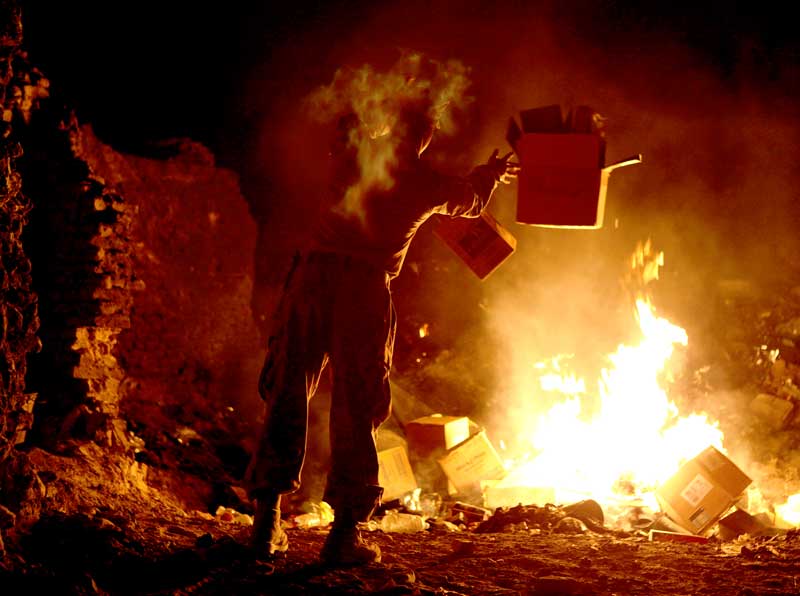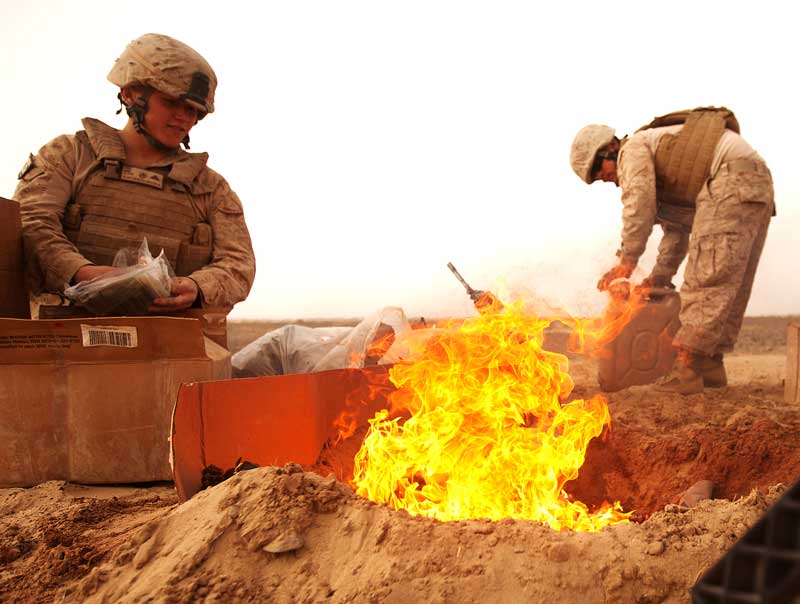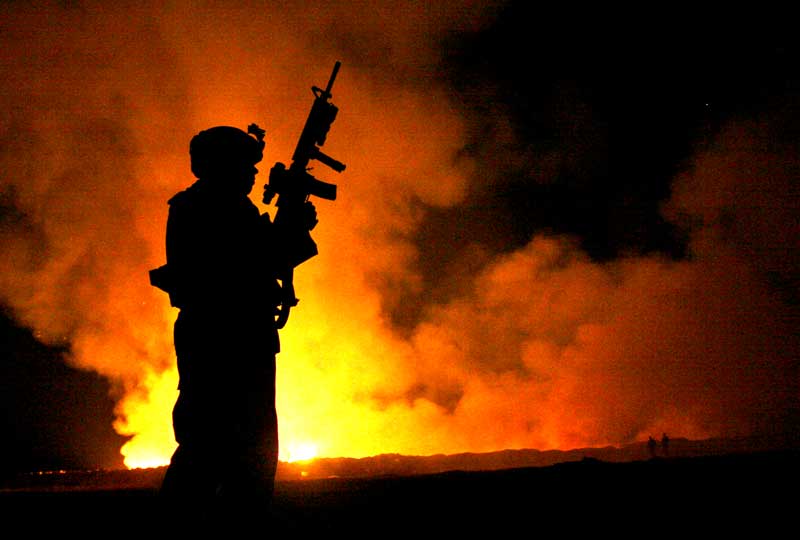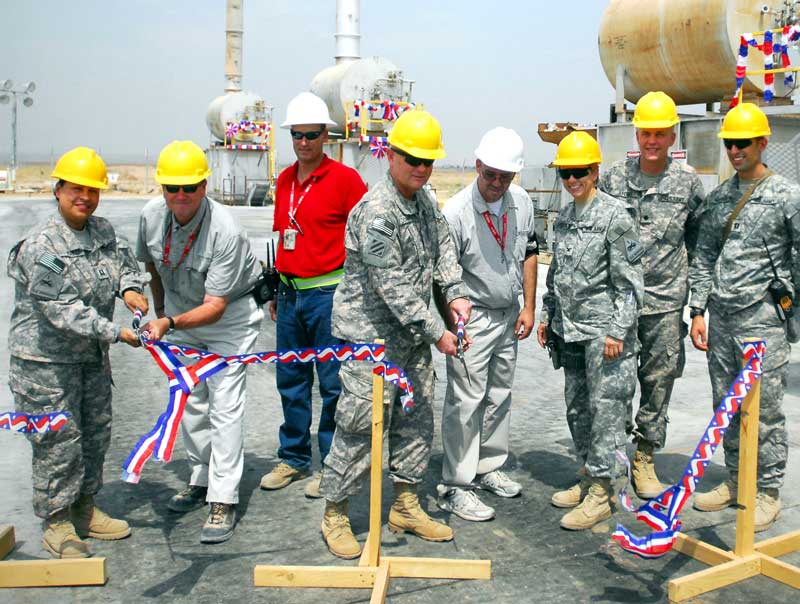Burn Pit Symptoms: The Top 5 Things to Know
In 2011, government research on burn pit symptoms and long-term effects of burn pits failed to take into account the growing evidence of burn pit symptoms reported by service members. Carbon monoxide, nitrogen dioxide and hydrogen cyanide are produced by burn pits and could potentially be causes of burn pit symptoms. These were not measured in the government’s study.
1. What are considered burn pit symptoms?

The symptoms of burn pit exposure vary greatly depending on what was burned at the site.
“A 2010 Army Institute of Public Health study of burn pits in Iraq and Afghanistan reported that large bases burned waste that consisted generally of 5–6% plastics, 6–7% wood, 3–4% miscellaneous noncombustibles, 1–2% metals, and 81–84% combustible materials (further details on waste composition were not available).”
An exhaustive list of the chronic issues associated with burn pits may be impossible to create, making the burn pit registry all the more critical. The authors of the government research believed the symptoms to include:
- Neurologic effects and reduced CNS function
- Liver toxicity and reduced liver function
- Cancer
- Respiratory toxicity and morbidity
- Kidney toxicity and reduced kidney function
- Blood effects
- Cardiovascular toxicity and morbidity
- Reproductive and developmental toxicity
The New York State Division of Veterans’ Services put together a list of burn pit symptoms caused by exposure:

Neurological Conditions
| Parkinson’s Disease | Peripheral neuropathy (an illness causing tingling in your arms, legs, fingers, or toes) |
| Stroke |
Heart, Blood or Blood Pressure-Related Conditions
| Hypertensions Disease | Peripheral Vascular Disease |
| Non-Ischemic Cardiomyopathy | Ischemic Heart Disease (commonly referred to as “clogged arteries”) |
Respiratory Conditions
| Asthma | COPD |
| Constrictive Bronchiolitis |
Cancers
| Bladder Cancer | Lung Cancer (and other respiratory cancers) |
| Bone Cancer | Hodgkin’s Disease |
| Prostate Cancer | Non-Hodgkin’s Lymphoma |
| Kidney Cancer | Soft Tissue Sarcoma (cancers in body tissues such as muscle, fat, blood vessels, etc.) |
| Intestinal Cancers | Chronic B-Cell Leukemias |
| Leukemia | Multiple Myeloma (cancer that attacks your plasma cells) |
| Tonsil Cancer | Myelodysplasia |
| Lymphomas |
Other Conditions
| Type II Diabetes | Autoimmune Disorders |
| AL Amyloidosis | Chloracne (a skin condition that looks like acne often seen in teenagers) |
| Lupus | Poryphyria Cutanea Tarda (an illness that damages the function of your liver) |
2. Origins of Burn Pit Symptoms

Previously Veterans were denied a VA rating for burn pit symptoms. Eventually, a grassroots movement of disabled veterans with burn pit symptoms, assisted by media reports on the potential toxicity of these pits, put enough pressure of the government to reevaluate its position. Since that 2011 report came out, the VA has slowly started to accept claims related to burn pit symptoms.
One of the most famous cases of a suspected burn pit fatality is the son of current Presidential candidate and former Vice President Joe Biden. Beau Biden honorably served overseas and died as a result of complications from brain cancer. The former Vice President is convinced his son’s diagnosis is a direct result of burn pit exposure.
“He volunteered to join the National Guard at age 32 because he thought he had an obligation to go,” Presidential Candidate Joe Biden told The Service Employees International Union. “And because of exposure to burn pits — in my view, I can’t prove it yet — he came back with Stage Four glioblastoma.”
Even with White House support, minimal progress has been made. As noted in the 2011 study titled Long-Term Health Consequences of Exposure to Burn Pits in Iraq and Afghanistan, much needed to be done before victims can get the benefits they deserve. The VA was tasked with several duties as a result.
3. What do we know about burn pits?
There has been quite a bit of research conducted on burn pits and the burn pit symptoms that result in humans and animals. Animal testing has revealed overwhelming evidence in the toxicity of burn pits. Despite this body of evidence, the Committee on the Long-Term Health Consequences of Exposure to Burn Pits in Iraq and Afghanistan by the Institute of Medicine instead based comparisons on firefighters and municipal workers. This is problematic because even in the busiest cities firefighters are only exposed to harsh environments on occasion, and workers at a municipal incinerator had a much higher air quality in their work area. Additionally these groups were given proper PPE donning and doffing training. This pales in comparison to men and women in uniform inhaling black smoke and experiencing acute burn pit symptoms like coughing up blood. Often, these toxins were present nearly constantly, with human waste in some cases burning a few hundred feet away from service member’s cots.
Burn pit symptoms are real, and so are the stories from those who lived it.

In an article in the New Republic, many military service members were interviewed about their interaction with these trash piles. They revealed the everyday waste they dropping in the pit, as well as some of the odd, and sometimes disturbing, products that found their way into the open flame. From animal carcases, plastic chemical drums, nylon, tires, wires, tarps, to batteries (because the Taliban used the carbon rods to trigger IEDs) . “Staff Sergeant Tim Wymore burned 25 loads of DEET-soaked tents and walked around with the taste of smoke in his mouth.”

Every imaginable thing burned in the pits, turned into ash and entered the lungs of the military units stationed nearby. Burn pit symptoms have caused more problems than the government has been willing to admit in the past. Still, some independent clinicians are involved in groundbreaking work on this very topic. Dr. Robert Miller, a pulmonary specialist at Vanderbilt University, has strongly linked constrictive bronchiolitis as an illness caused by open burn pits. While it’s a relief for some to finally know their diagnosis, this one happens to be fatal.
We also now know the government has taken steps to mitigate the issue, which is tacit evidence burn pits are a risk. Eventually, funds were set aside to build large scale incinerators. This replaced the practice of burning trash while using jet fuel as an accelerant.
4. What do I need to do to report my burn pit symptoms?
For starters, the VA is collecting all the data. Scientists are still conducting independent research, but there is still a huge need for data from the service members themselves. Firstly, a Veteran seeking to report burn pit symptoms should join the over 200,000 others who have submitted information to the Burn Pit Registry so that this information can be tracked and analyzed for trends, provided to policymakers, and ultimately used to set a VA rating for burn pit exposure.

Anyone seeking compensation can’t stop there. The Burn Pit Registry has nothing to do with disability ratings, and a Veteran seeking a higher disability percentage must submit relevant medical evidence to have their rating reevaluated.
5. Can I get compensation or a VA rating for burn pit symptoms for issues relating to burn pits?
Short answer is yes. Long answer is it’s just as complicated as most other claims.
The burden of proof has always been placed on the Veteran to demonstrate exposure or injury that is directly related to military service. As any good military leader will say you have to get whatever medical ailment documented, or it’s as if it never happened. However, in burn pit cases, the effects tend to be long term and might not surface when the victim is still on active duty.

What the VA knows is there were and are burn pits everywhere, and if a Veteran was in country, there’s no doubt they was exposed to questionable burning trash. The problem is the VA must have evidence of direct and prolonged exposure along with related symptoms that match what others have reported and what is generally accepted as part of the research.
The VA’s guidance is Veterans may file a claim for disability compensation, but approval or denial is all on a case-by-case basis.
They’re making progress

While their website still states the research does not show evidence of long-term health problems from burn pits, Veterans are being paid for their illnesses as a result of their time overseas. Plenty of evidence has become available, and enough policymakers have opened their eyes to ensure families of these wounded Veterans are no longer told the skin lesions or tumors aren’t real or aren’t service-connected.
The situation is similar to what Vietnam era Veterans went through dealing with exposure to Agent Orange.
But there’s hope if Veterans continue to push the issue with the medical professionals and on Pennsylvania Avenue. Veterans may enter their information into the Burn Pit Registry and reach out to their representatives in Congress.
If you are interested in evaluating your own rating after being exposed to the toxic air from serving near burn pits, explore our Mastermind Facebook group.
The appearance of U.S. Department of Defense (DoD) visual information does not imply or constitute DoD endorsement.
About the Author

Matt Helmkamp spent ten years as an active duty United States Marine, all of which as law enforcement. Starting a Military Police Officer, Matt moved on to join the Special Reaction Team and spent the remainder of his career as a Detective in the Criminal Investigation Division.
While active duty, Matt earned his Bachelors in Homeland Security and Emergency Management and later completed his M.B.A. with a specialization in Public Administration. After receiving an honorable discharge in 2017, Matt joined the State Police as an Intelligence Analyst. Matt is also a disabled Veteran with a rating of over 50%.
